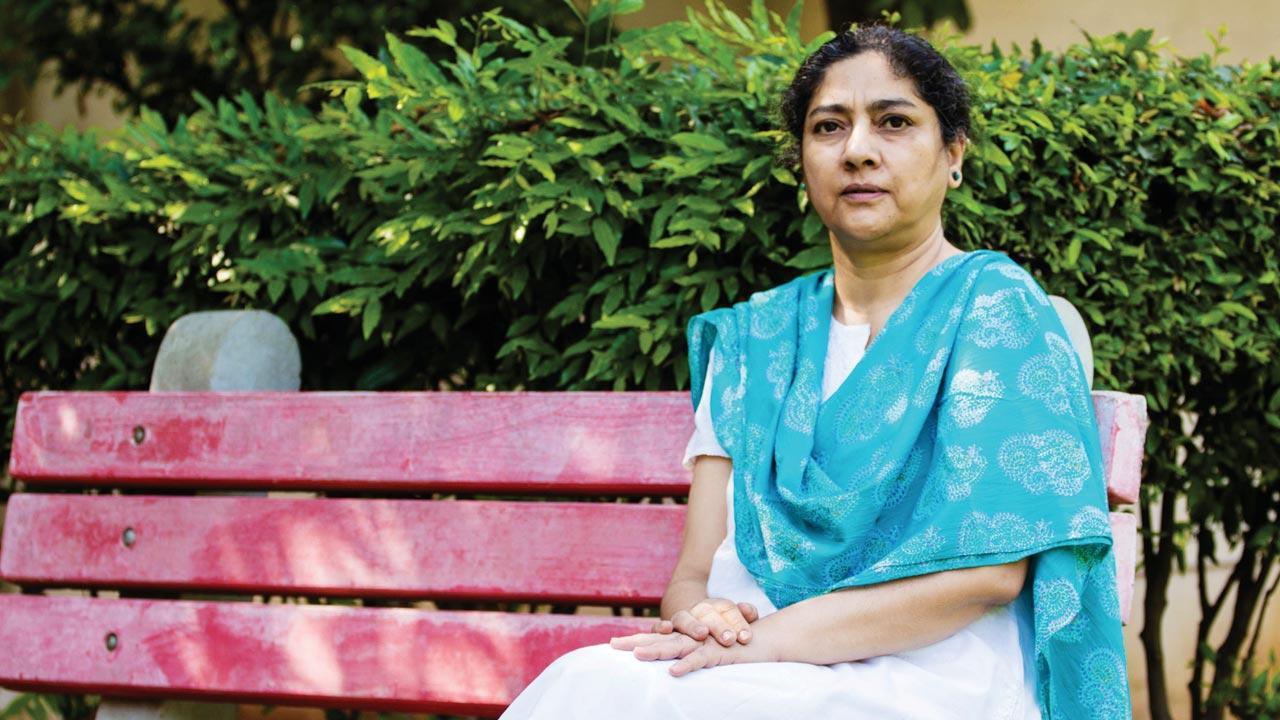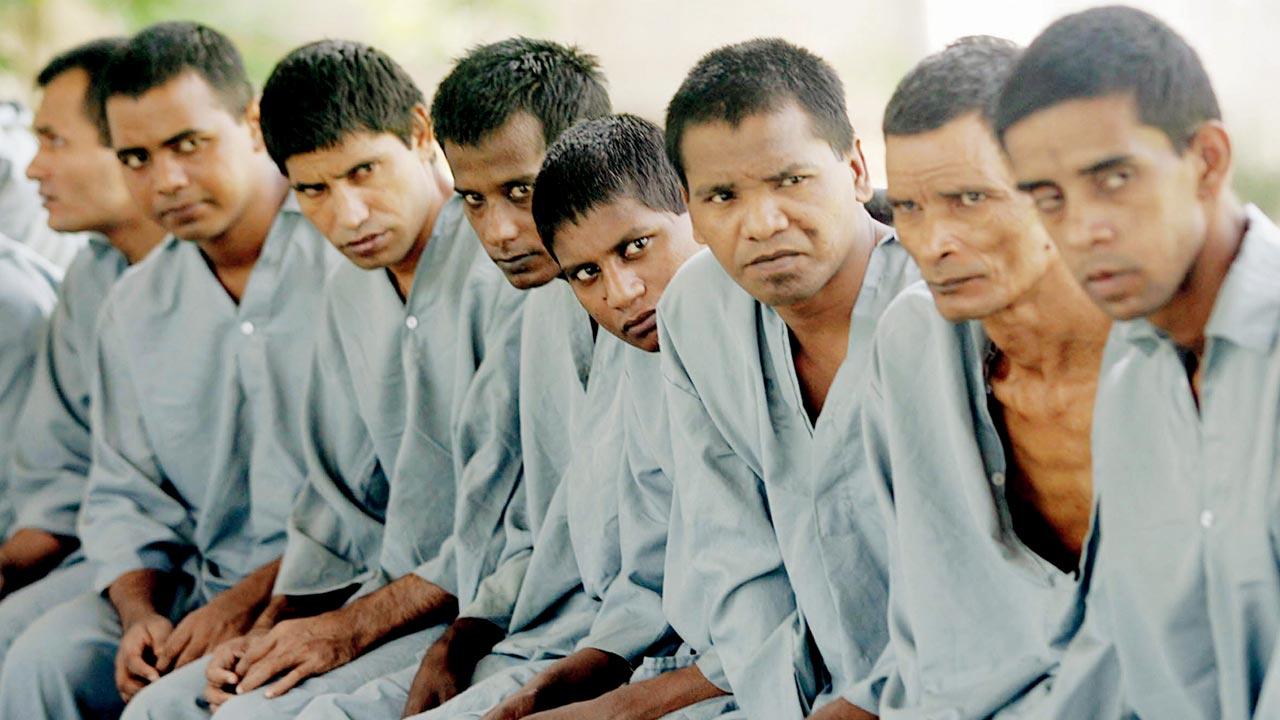Writer Daman Singh’s new book shines light on India’s tryst with mental healthcare, how historical events impacted asylums, and why force against patients came to be replaced by empathy

Daman Singh at her New Delhi residence. Pic/Nishad Alam
It was in Saadat Hasan Manto’s gut-wrenching short story Toba Tek Singh that this writer first encountered the plight of inmates in a Lahore asylum. Set a couple of years after the Partition, Manto’s story revolves around Bishan Singh, a Sikh from the town of Toba Tek Singh, who is among those to be shifted, when the governments of India and Pakistan, after much deliberation, decide to exchange some of the Muslim, Sikh and Hindu inmates. When Bishan learns that Toba Tek Singh is now in Pakistan, he refuses to leave. The final scene, as moving and painful as it is, makes known how the Partition spared no one, not even those who could make little sense of it.
ADVERTISEMENT
Daman Singh’s soon to release non-fiction title, Asylum: The Battle for Mental Healthcare in India (Westland) has us realise that Manto’s fiction wasn’t far removed from reality. It was only a year after India’s Independence, in December 1948, that the two newly-formed governments agreed on what to do with mentally ill patients whose relatives were on the other side. “At this point, India had made a list of 240 patients who were to be sent to Pakistan. And Pakistan had made a list of 513 patients who were to be sent to India,” the author shares in the book. It would take another two years before “the countries exchanged their mentally ill patients in a single simultaneous exercise”. By then, an official list, published in The Tribune, revealed how 143 Indian patients had died at the Lahore mental hospital between August 20, 1947 and July 23, 1950. “The Partition itself was a colossal human tragedy, and in this, the littler tragedy was that of people who were in these mental hospitals. They had been completely forgotten. I think, they were the last to be given attention,” shares Delhi-based Singh in a video call with mid-day. Little is known about these patients. “How did they live? How were they being looked after? These are questions we don’t have answers to.”
 A file picture of Indian prisoners released from Pakistani jails, being treated for shock and trauma, at a hospital in Amritsar. Post the Partition, it took three years for the governments of India and Pakistan to “exchange their mentally ill patients in a single simultaneous exercise”. Pic/Getty Images
A file picture of Indian prisoners released from Pakistani jails, being treated for shock and trauma, at a hospital in Amritsar. Post the Partition, it took three years for the governments of India and Pakistan to “exchange their mentally ill patients in a single simultaneous exercise”. Pic/Getty Images
Singh, who is daughter of leading economist and former Prime Minister of India Manmohan Singh, has spent the last three years researching about India’s tryst with mental healthcare—from the early 20th century, in particular, when reform actually began taking place. “There had been centuries of thought that went into the idea that mental illness was something supernatural or occult, or a result of sins that one had committed. Today, the accepted notion is that it is just another kind of illness. And therefore, it can be treated, cured and managed, and that those suffering from it, can live a healthy life. I wanted to go back in time, and understand when this new concept came into India, and how it progressed since,” says Singh, of why she decided to write this book.
The change only came about in the early 1900s. Asylums had existed for nearly two centuries before that—the first officially recognised, though privately run, asylum was established in Calcutta in the year 1788. But they had mostly been institutions, where people were isolated, not treated. “The initial push came from two people who were outside the medical system,” she says. In August 1894, the divisional commissioner of Chhattisgarh AHL Fraser and chemistry professor Dr CJH Warden—both members of the Indian Hemp Drugs Commission—submitted a confidential note to the government, related to the use of hemp drugs, believed to cause insanity. As part of their report, the commission members had visited every asylum, scrutinised records, and spoken to witnesses. “They were horrified by the conditions there,” adds Singh. They had seen, among many things, a patient ‘raving and furious’ in acute mania, who was chained to a tree in an open court. “What they saw was not meant to be part of the main report they were writing [or even pursuing]. So, they wrote a separate report, and what they put down was enough to embarrass and shame the government. This report was echoed back in England, where the Medico-Psychological Association of Great Britain splashed it about. To the credit of the then Viceroy of India [Lord Curzon who took over in January 1899] things finally started moving.”
In the book, Singh sheds light on how reforms began taking place in these asylums— overcrowded and unhygienic spaces were now making way for spacious buildings, these institutions slowly came to be identified as “hospitals,” and some of the new medical superintendents and later, alienists who took charge, began treating the patients with more empathy and kindness, ditching the hand-cuffs and isolation rooms, for a range of new therapies.
The biggest blow to India’s mental healthcare infrastructure, however, came during World War I and II. This unfortunately, says Singh, has not been documented in any literature she came across during her research. “Both the wars were a huge setback. One reason was that the senior positions in the health system were held by military officers from the Indian Medical Service. When the wars broke out, they had to go to the battlefront. Also, while the wars were on, there were soldiers returning with mental illnesses, and they had to be put somewhere. So, they were really feeding back into the system, which was already under so much strain [due to the economic impact of the wars]. The hospitals continued to feel the pressure, long after peace was declared,” says Singh, who has worked in the field of development for 20 years.
Post-Independence, Singh says, that little movement took place. Regressive attitudes around the issue among Parliamentarians as well, meant an effective and new law on mental health eluded India till 1987. “It’s very true that the Parliament to a large degree reflects the sentiments of ordinary people. So, a lot of the prejudice, ignorance and apathy we see in society, would be mirrored there. But, what is encouraging is that there were voices of reason as well. For instance, I really admire how the then health minister Rajkumari Amrit Kaur [1947-57] took down people, who were asking for sterilisation of those who were considered unfit. The fact that India did not take that route, and closed that option very early on, is something to our credit.”
1788
Year in which India’s first officially recognised asylum was established (Kolkata)
 Subscribe today by clicking the link and stay updated with the latest news!" Click here!
Subscribe today by clicking the link and stay updated with the latest news!" Click here!







